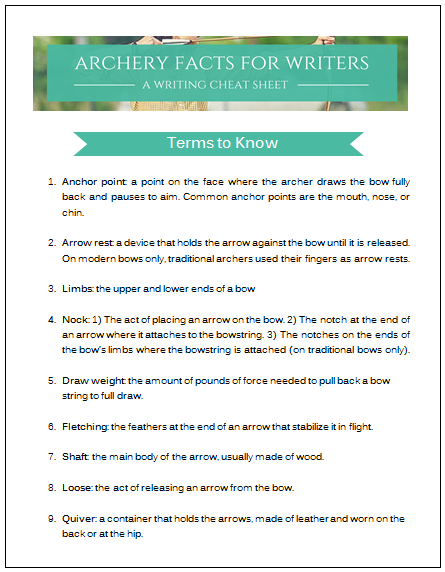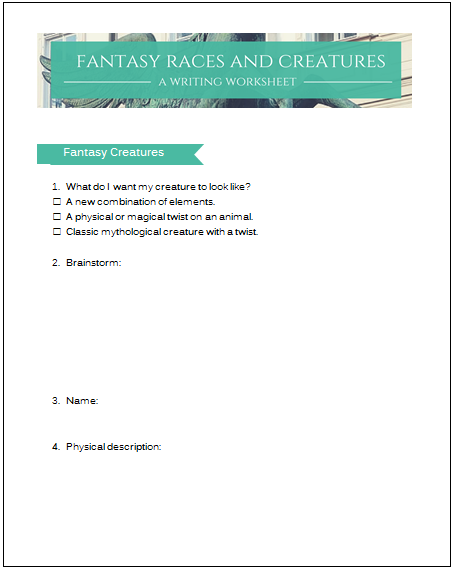I love a book that can really bring a setting to life. You know, the stories that have these places you wish you could visit, and are so detailed you’re convinced they must exist somewhere. Narnia. Hogwarts. Middle Earth. Westeros.
Er…on second thought, I’d rather not go to Westeros. I’m fine admiring that one from afar.
But I’m not just talking about fantasy books here. What about books that are set in real places? For example, Beautiful Creatures by Kami Garcia and Margaret Stohl, which is set in South Carolina. The setting became a character in and of itself, and was so detailed that it made me want to visit South Carolina (which I eventually did!). I can’t imagine that book without its setting!
So how can you bring your story’s setting to life for your readers? Here are my top tips.
1.Sensory Details
In real life, our world is full of sensory experiences. To make your fictional world feel real, you need to engage the reader’s senses. Especially since your world is likely (though not always) one the reader has never been to before.
We need to be able to feel the desert sun on our face, hear the sheep bleating on an Irish farm, see two knights hurtling towards each other in a joust, taste the eye-watering spices of a chicken curry, smell freshly baked baguettes.
Writers tend to favor visual details because they’re obvious and the easiest to write. But really challenge yourself to use your other senses when you’re writing a scene.
2. Specific Details
To really bring a setting to life, use specific details over general ones. The more specific you can get, the better. Instead of a tree, say elm, poplar, cedar, or willow. Instead of a bird, say crow, chickadee, owl, or pelican. This will create a more vivid picture in your reader’s head
Also, avoid saying things like “there was a variety of fruit in the basket” or “he had a room full of complicated-looking scientific equipment” or “the walls were lined with paintings.” What kind of fruit? What sort of equipment? What type of paintings? This can be seen as lazy writing because creating specific details takes more work and a lot of times research.
Being specific doesn’t just give a more vivid picture, but it also lends credibility. When something is so detailed, readers will begin to think “How could this not be real? The author obviously knows what they’re talking about.” It shows that you’ve either done your research for historical/contemporary fiction, or have put a lot of time into developing your fantasy world.
3. Interesting Details
When you’re describing a setting, leave out the obvious details. You can’t describe everything, so you want to focus on the important stuff and leave out the clutter. The reader can fill in the blanks on her own. If you say “bedroom” the reader will automatically picture a room with a bed, dresser, and desk. We know what a bedroom looks like.
But, what’s different about this specific bedroom? What are the interesting details that make it different? Maybe the bedroom has a week old box of half-eaten pizza, a collection of dream catchers, or a shelf filled with books on big foot. Maybe there’s a mural of Justin Bieber painted on the ceiling. Or maybe there’s a giant crack in the wall with a mysterious light pouring out.
Coming up with interesting details for every setting can be a challenge, but it’s well worth the effort.
4. Similes
Similes play an important role in description. You need a way to link the unfamiliar sights and experiences of your world with something more familiar to the reader. How can we understand something we’ve never seen or experienced? It’s your job to bridge the gap with similes.
If you’re trying to describe a fantasy creature that doesn’t exist, you compare it to things we’re familiar with so we can see it: It has eyes like an owl’s, a tail like a lion’s, ridges like thorns growing out of its back.
What if you’re trying to describe the taste of Greek tzaziki sauce to someone who’s never tried it? You could say: “It tasted fresh like cucumbers and dill, with a pleasant tang.” Or what if you’re trying to describe the call of a kookaburra bird?: “The trilling sound coming from its beak sounded like laughter.” Notice that adjectives are also helpful for describing the unfamiliar, but be careful not to overuse them!
Find a way to translate the unfamiliar into the familiar so your reader isn’t left in the dark.
5. Subjectivity
What makes a setting interesting isn’t necessarily what it looks like, but what the viewpoint character notices and how she feels about it. Different people will view the same setting in different ways. They will notices different things.
One character might find a circus magical and exciting, and another might find it silly and boring. One character might admire the decor of a house, while another might admire the architectural design.
What does your character see and feel? Everything we’ve just covered–sensory, specific, and interesting details–should be filtered through your character. The similes you use should also come from your character. So, if you want to compare someone’s eyes to the sea but your hero lives in a desert and has never seen the sea, you need to find a different simile. When your character experiences new and unfamiliar things, he will pull from familiar details of his own world to bridge the gap.
6. Interaction
Your setting does no good if you paint a pretty picture that just sits there. A setting needs to do more than look pretty–it needs to work and be functional. You don’t want your keep your setting and characters separate, you want to mesh them together.
You can do this by having your characters interact with your setting. Give them “props” to handle or something to do in the scene. Maybe they’re cleaning a gun on the dining room table, rolling out cookie dough on the kitchen counter, or shelving books in a library. Your setting isn’t a museum where you can look but not touch!
Another tactic you can use is to make the character struggle against the setting. Maybe she’s biking home when it starts to storm, trying to hike through an overgrown forest, or gets lost in London while on vacation. We encounter struggles with out environment in everyday life, so showing that your setting isn’t perfect helps add realism.
What makes a setting feel real to you? Do you have any tips for making a setting come to life? Share them below!

























Rather than long descriptions, I appreciate setting established through a few aptly chosen details. Give me some key pieces of information, specific and unique, that spark an image in my mind and leave me plenty of room to fill in the gaps. I like settings that contribute to characterization as well–we learn about the characters as we see what they notice (or don’t notice) about the world around them.
–Sam Taylor, AYAP Team